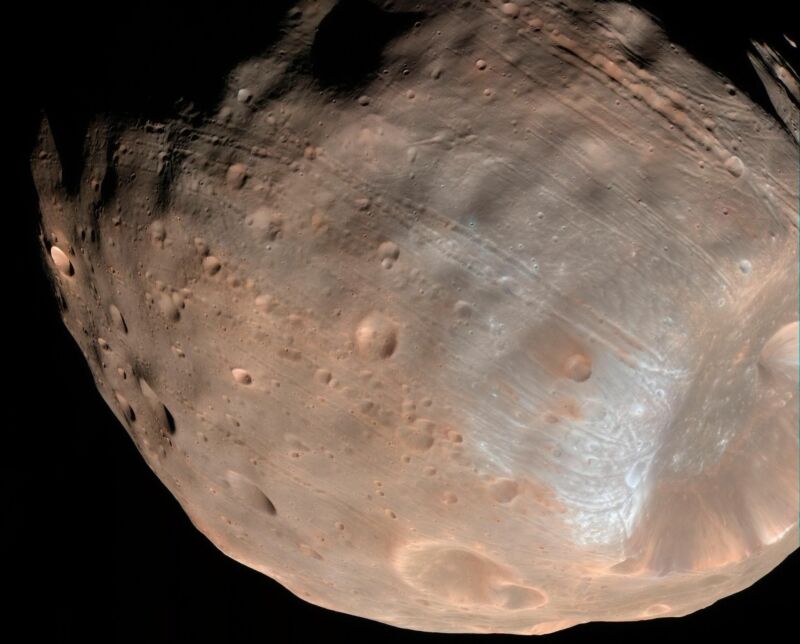
Japan's space agency has finalized a plan to send a probe to the Martian moons of Phobos and Deimos, and it includes an ambitious lander to collect samples from Phobos to return to Earth.
The agency, JAXA, submitted the plan to the country's science ministry on Wednesday, the Asahi Shimbun newspaper reported. On Twitter, the Martian Moons Exploration (MMX) official account also announced that it had formally moved from design into the "development" phase of operations. The space agency estimated that the total cost for the mission would come to $417 million.
The current plan calls for a 2024 launch of the probe on an H-3 rocket, a new booster built by Mitsubishi Heavy Industries and expected to debut late this year or in 2021. The MMX spacecraft would enter into orbit around Mars in 2025 and return to Earth in 2029.
Japan has experience with similar kinds of missions to small bodies in the Solar System. Its Hayabusa-2 probe successfully grabbed material from surface of the asteroid Ryugu and is scheduled to return the asteroid samples to Earth late this year. With a diameter of just 23km, Phobos has a surface gravity that is about one-thousandth that of Earth.
The MMX team has already said it plans to work on a similar small lander to Hayabusa-2 for the Mars mission, collaborating with the German and French space agencies.
No spacecraft have yet flown to Mars with the designated purpose of studying its small moons, nor has material ever been collected from them. Scientists would be keen to study the surface of a moon other than that of Earth's companion, which should help them better understand the formation of terrestrial planets. For Phobos and Deimos, it is also important to understand whether they are captured asteroids or fragments of the red planet ejected during some ancient impact.
Detailing the surface of Phobos is also important because it's possible that the first human missions to Mars will land there rather than on the surface of Mars. With its much smaller gravity well, it would be much easier for astronauts to leave Phobos for the return journey to Earth than the surface of Mars itself.
https://news.google.com/__i/rss/rd/articles/CBMiamh0dHBzOi8vYXJzdGVjaG5pY2EuY29tL3NjaWVuY2UvMjAyMC8wMi9hbWJpdGlvdXMtamFwYW5lc2UtbWlzc2lvbi10by1waG9ib3MtbW92ZXMtaW50by1kZXZlbG9wbWVudC1waGFzZS_SAXBodHRwczovL2Fyc3RlY2huaWNhLmNvbS9zY2llbmNlLzIwMjAvMDIvYW1iaXRpb3VzLWphcGFuZXNlLW1pc3Npb24tdG8tcGhvYm9zLW1vdmVzLWludG8tZGV2ZWxvcG1lbnQtcGhhc2UvP2FtcD0x?oc=5Bagikan Berita Ini














0 Response to "Japan’s space agency moving ahead with Phobos lander mission - Ars Technica"
Post a Comment